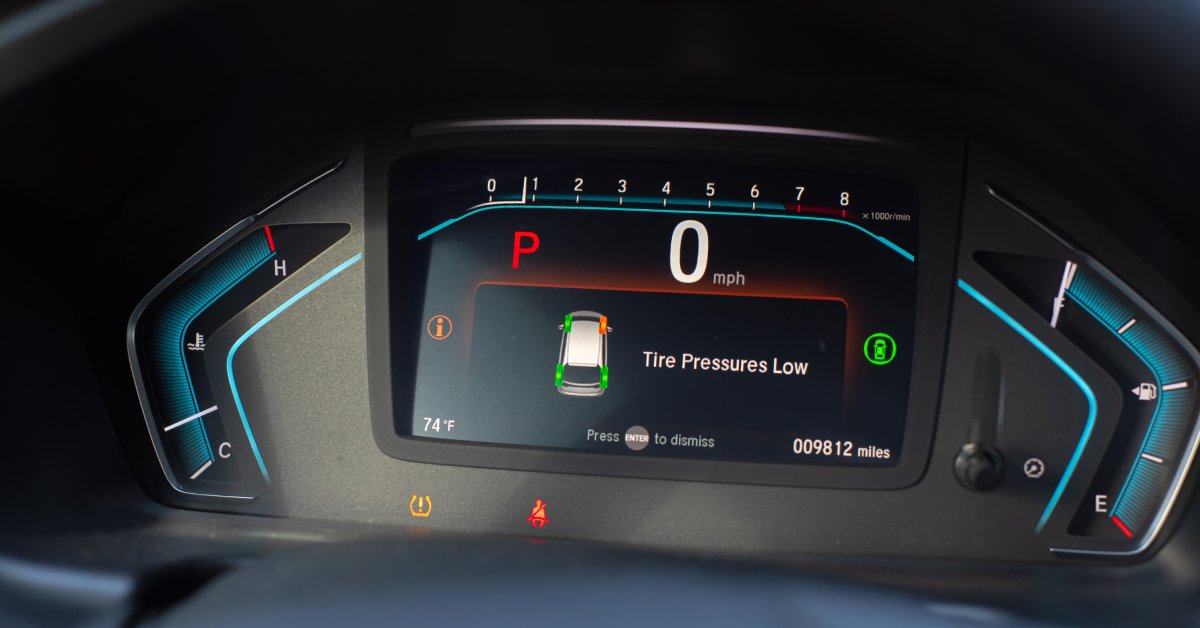Safety on the road is a priority for drivers, so driving with care and staying alert are important ways to reduce risks behind the wheel. However, unexpected situations can impact even the most careful of drivers, including scenarios caused by failing parts in their own vehicles.
Wheels and tires are subject to more wear and tear than the majority of other parts in your vehicle. Misconceptions about tires can lead to improper care, which could increase your chances of having a flat, blow-out, or accident. That’s why we’re here to debunk the most common myths about tire safety. With this information, you can take steps to be safer on the road.
If the Tread Is Above Legal Limits, It’s Safe To Use
Most people already know about the penny test, which is used to determine if the tire tread is above the legal limit for driving on public roads. While this test is a useful way to make sure your tread hasn’t gotten too low, it doesn’t guarantee that your tires are safe to drive on. That’s because deep treads aren’t the only thing that dictates whether a set of tires is still good or not.
Weakened sidewalls, cracks in the surface, and worn surfaces can all compromise the safety of your tire. These issues might lead to tire slippage in wet conditions or blowouts when you least expect them. That means you shouldn’t just test your tread depth with a penny. Instead, thoroughly inspect your tires regularly to determine if they’re still in roadworthy condition.
You Should Only Worry About Tire Pressure When Your Car Warns You

Outside of tread depth and quality, tire pressure is one of the other most important factors to consider for tire safety. If there’s not enough air in the tires, you risk them blowing out. Fortunately, most modern vehicles have tire pressure-monitoring systems to prevent this.
While these systems are great, they sometimes make drivers complacent, leading to them not checking their pressure manually. If the system were to fail, you wouldn’t know about your low tire pressure until it’s too late.
Even when tire pressure-monitoring systems function properly, they only warn you when your tires are below 25 percent of the recommended pressure. While these are still generally manageable levels, you might not want to take that kind of risk, so get into the habit of checking your tires yourself every month or two.
All-Season Tires Are Good Options for Snowy Environments
When people hear the term “all-season,” they usually assume these tires are usable all year long. While there is some truth to this, that doesn’t mean all-season tires are the ideal choice for winter weather. All-season tires are made to handle changes in temperature, not icy or snowy roads. If driving in these conditions, winter tires often offer better performance and safety.
Old, Unused Tires Are Okay To Use
Sometimes, when you need to buy a new set of tires, someone in your life may offer you an older set that they never used before. While this might sound like a tempting offer to save some money, it might not be the smartest choice if you want to prioritize safety on the road.
Whether you use them or not, tires age. Once they’re around six to 10 years old, they start to degrade, forming cracks and developing weak spots, and this is if they were stored in a cool, dry environment. If they’re left in the sun or put into a damp shed, they’ll deteriorate even faster. For the sake of safety, consider buying new tires when it comes time to replace your set.
You Should Follow the PSI Numbers on the Tire Sidewall

Most people are aware that there’s no set pressure for your tires. Due to that, many drivers are unsure how much they should fill their tires up when the pressure gets too low. This leads to them looking around either on their car or online, which might end with them using the PSI number on the side of their tire. This is not a number you should use when filling your tires.
The number on the tire’s sidewall indicates the maximum PSI your tires can physically handle, not the recommended pressure. If you fill your tires to that level, you increase the risk of popping them, especially if you hit a pothole or curb at high speeds. Instead, always check the inside of your driver’s side door. The information there will tell you what PSI is best for your vehicle.
Rear Tires Don’t Matter as Much for FWD Vehicles
Many vehicles on the road today use front-wheel drive (FWD). That means your engine only moves the front wheels when accelerating. This has led many drivers to believe that only the front wheels matter when it comes to tire health. However, this belief overlooks some key safety factors.
Rear tires still need enough tread and tire pressure to brake properly. Plus, they must be able to grip the road during turns so your vehicle doesn’t spin out. Rear tires also need enough tread and tire pressure to brake properly. That’s why tracking the condition of your back tires is important, but since you should rotate your front and back tires regularly, wear and tear will get distributed more evenly.
You Have to Buy Expensive Tires To Be Safe on the Road
The final myth about tire safety is the idea that only expensive tires provide safety. Many middle-of-the-road tires, as well as some cheaper ones, can perform just as well as expensive options.
Always thoroughly investigate each set of tires you’re considering. Take features like the tread type, level of traction, and longevity into consideration to determine how safe the tires will be. Also, buy car and truck tires from a trusted supplier like WheelerShip.


